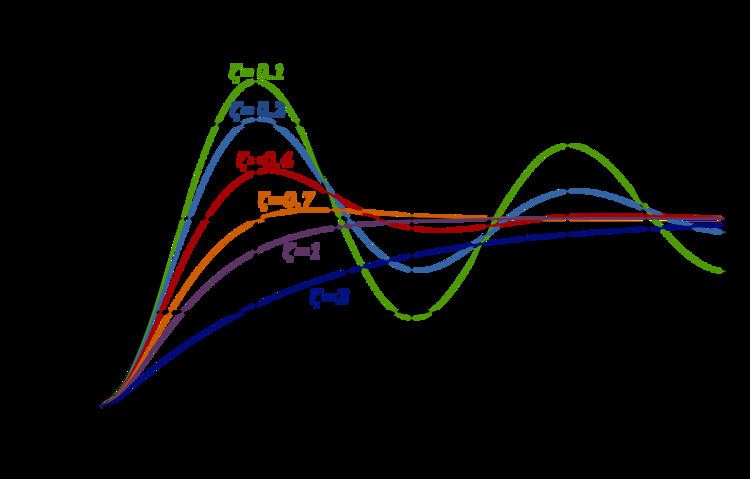 | ||
In engineering, the damping ratio is a dimensionless measure describing how oscillations in a system decay after a disturbance. Many systems exhibit oscillatory behavior when they are disturbed from their position of static equilibrium. A mass suspended from a spring, for example, might, if pulled and released, bounce up and down. On each bounce, the system is "trying" to return to its equilibrium position, but overshoots it. Sometimes losses (e.g. frictional) damp the system and can cause the oscillations to gradually decay in amplitude towards zero or attenuate. The damping ratio is a measure of describing how rapidly the oscillations decay from one bounce to the next.
Contents
The behaviour of oscillating systems is often of interest in a diverse range of disciplines that include control engineering, mechanical engineering, structural engineering, and electrical engineering. The physical quantity that is oscillating varies greatly, and could be the swaying of a tall building in the wind, or the speed of an electric motor, but a normalised, or non-dimensionalised approach can be convenient in describing common aspects of behavior.
Oscillation cases
Definition
The damping ratio is a parameter, usually denoted by ζ (zeta), that characterizes the frequency response of a second order ordinary differential equation. It is particularly important in the study of control theory. It is also important in the harmonic oscillator.
The damping ratio provides a mathematical means of expressing the level of damping in a system relative to critical damping. For a damped harmonic oscillator with mass m, damping coefficient c, and spring constant k, it can be defined as the ratio of the damping coefficient in the system's differential equation to the critical damping coefficient:
where the system's equation of motion is
and the corresponding critical damping coefficient is
or
The damping ratio is dimensionless, being the ratio of two coefficients of identical units.
Derivation
Using the natural frequency of a harmonic oscillator
This equation can be solved with the approach.
where C and s are both complex constants. That approach assumes a solution that is oscillatory and/or decaying exponentially. Using it in the ODE gives a condition on the frequency of the damped oscillations,
Q factor and decay rate
The factors Q, damping ratio ζ, and exponential decay rate α are related such that
When a second-order system has
Logarithmic decrement
The damping ratio is also related to the logarithmic decrement
This relation is only meaningful for underdamped systems because the logarithmic decrement is defined as the natural log of the ratio of any two successive amplitudes, and only underdamped systems exhibit oscillation.
